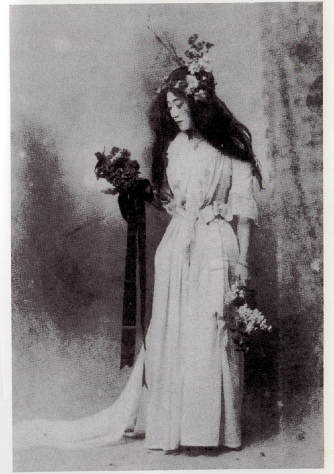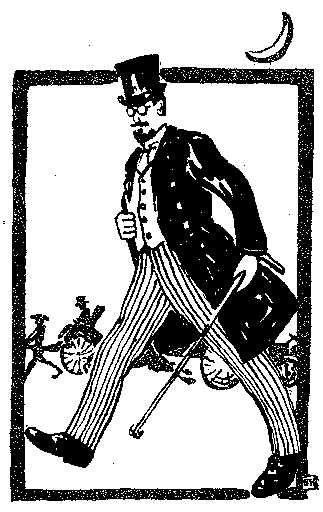TSUBOUCHI Shōyō's 1884 translation of Julius Caesar is notable for two things: (1) being the first ever translation of a full Shakespeare play into Japanese, and (2) being rendered jōruri-style, right down to the title: Shiizaru kidan: Jiyū no tachi, nagori no kireaji 該撒奇談 自由太刀餘波鋭鋒, that is "The Curious Tale of Caesar: The Swords of Freedom, and the Keenness of their Wake."
What does jōruri Shakespeare look like? Here's Shōyō's version of the first few lines of Marc Antony's rabble-rousing eulogy, plus the original English version from the First Folio (of course, Shōyō was probably working from a rather more refined edition):
Friends, Romans, Countrymen, lend me your ears:
I come to bury Caesar, not to praise him:
The euill that men do, liues after them,
The good is oft enterred with their bones,
So let it be with Caesar. The Noble Brutus,
Hath told you Caesar was Ambitious:
If it were so, it was a greeuous Fault,
And greeuously hath Caesar answer'd it.
Heere, vnder leaue of Brutus, and the rest
(For Brutus is an Honourable man,
So are they all; all Honourable men)
Come I to speake in Caesars Funerall.
ヤオレ方々羅馬府民諸君、只今これにて菴兎尼が、演説いたせばしばしの間、屈を忍びてお聴き下され、素より自分は此所にて、なき獅威差(しいざあ)の功勲を称賛せんとの所存にあらず、只彼の人の亡骸を、収むる式を行はんと、思ふまでにて候が○世の諺にも申せる如く、好事門を出ず、悪事千里に走るとやら、凡そ人の行も、悪事は其身死して後も、尚世に長く残れども、善事は数々其骨と、共に土中に埋もれて、世にしられずしてやむことあり、あの獅威差の身の上にも、これに類する行の、果してなしとも保し難し、至正至公の君子たる、舞婁多須氏は獅威差をば、野心非望を抱く者と、いはれたりしが、其事の、もし果して然らんには、実に歎くべき過失にて、其過失のある故に、誅殺された獅威差の、浅ましかりし身の果も、又歎くべく悲しむべし、舞婁多須氏をはじめとして、義挙に与せし人々は、皆これ正義の君子なる故、此度自分に許を与へて、なき獅威差のあとをとひ、兼ては、自分の胸懐を、吐露することを許されたり
The style is flowery and repetitive, which is to say jōruric, but the content is fairly close to the original — it's not even really worth back-translating. The main difference is the localized moral and philosophical references: for example, just before the "evil that men do lives after them" part, Shōyō inserts a Japanese proverb of similar import: Kōji mon wo idezu, akuji sen ri ni hashiru ("A good deed doesn't leave the house, a bad deed runs a thousand miles"; cf Twain's "A lie can travel halfway around the world while the truth is putting on its shoes"). Similarly, Antony's famous "honorable man" becomes a Confucian "至正至公の君子" or "正義の君子", that is, "righteous and just gentleman [jūnzǐ]."
No, the real difference lies not in the dialogue but... well, everywhere else. As Shōyō explains in the introduction, the reason he chose the jōruri form was because the original is "made up of dialogue alone" and not, therefore, a "script" 戯曲 as commonly understood in Japan at the time. In other words, he felt that he had do something about Shakespeare's notoriously sparse and unreliable stage directions if his translation was to be believable as a script for performance, and jōruri was the solution upon which he hit. (Not at random — Shōyō also believed that traditional Japanese theatre and Shakespeare shared a common sensibility that contemporary dramatists did not, and that kabuki in particular could and should be revitalized with elements mined from the works of the Bard.)
(Bibliographic aside: I first read about all this in detail in ONO Masashi's "Tsubouchi Shōyō and Shakespeare" 坪内逍遥とシェイクスピア, one of the essays in the excellent, ANZAI Tetsuo 安西徹雄-edited Japan's Shakespeare Century 日本のシェイクスピア100年.)
Anyway, here's an example of what it means to jōrurify Julius Caesar. Consider the original version of Caesar's death scene in Act III:
They stab Caesar.
Caes Et Tu Brute? - Then fall Caesar.
Dyes
It's very simple. Some modern editions specify that Casca stabs first, then Brutus and the others, but basically that's it. Shōyō, however, tells it thus:
(加)では御座りまするが獅威差公(獅)ヱヽくどいは、トふりむく處を、只一とつきと逆手にとり、突込懐剣身をかはす、獅威差肩先かすられて流るゝ血汐のからくれない、うぬ何すると獅威差が、驚きたけつてねじ上る、腕の痛みに加須可がなき声助けよ人々心得たりと、皆一同に懐に、かくし持たる懐剣ぬきもち、左右前後無二無三、つき夜に戦ぐしのすすき暗に、きらめく電光の、刃の下をかひくゞり、或はけたほしふみにじる、死物狂ひの獅威差が、獅子奮迅の働きに、ソリヤ珍事ぞと議堂の中、上を下へとたちさはぐ、暴波に大山の崩れかゝりしごとくなり、始終を窺ふ、マアカス舞婁多須、走りかゝつて獅威差の、腋の下深く突こむ鋒(獅)ヤ舞婁多須汝までがと只一と言を此世の名残り、外套かづきて面を掩ひ、二十余瘡を蒙りて、たち並びたる肖像の、多きが中に、奔瓶が像のほとりへ伏まろび、はかなく息は絶ゑにけり
Which, if you will permit a rather bombastic Englishification, works out something like this:
"But, Lord Caesar..." Casca says — "Bah!" replies Caesar, "Your prating is—" — As he turns, he frustrates the first dagger-thrust — His shoulder, grazed, lets flow a crimson tide of blood — "What is this?!" Caesar cries in shock, and twists to gain the upper hand, and Casca for his part feels pain invade his arm, and cries for help — The rest in grim agreement draw free hidden daggers from their sleeves — Now left and right and fore and flank, they strike as one, death whispers in the dark beneath the moon — Struggling under lightning-flashing blades — Kicking, Trampling — Fighting for his life, Caesar is become a raging lion — Well, now! here's the incident in the capitol, a rising to bring the lofty low, as a great mountain crumbles before raging waves — Marcus Brutus, who was watching all, runs up to Caesar, pushes dagger-point deep into Caesar's side — "Et tu, Brute?" — So Caesar speaks his final words — He pulls his cloak over his head, the better twenty wounds and more to bear — And so, amid the statues standing many in their rows, rolls the man to rest before the pedestal where Pompey stands, and there he breathes his last.
Trivia: although published in 1884, Shōyō's Julius Caesar wasn't staged until 1901. TOMIHARA Yoshiaki 富原芳彰 argues that this was almost certainly in response to the assassination of HOSHI Tōru 星亨, an ex-member of the Itō cabinet, in June of that year. [And I just noticed that later in his essay Tomihara discusses the characteristics of Shōyō's jōruri style using the exact same example as me. Crap.]
![[No-sword]](http://no-sword.jp/images/site/no-sword_banner.jpg)





